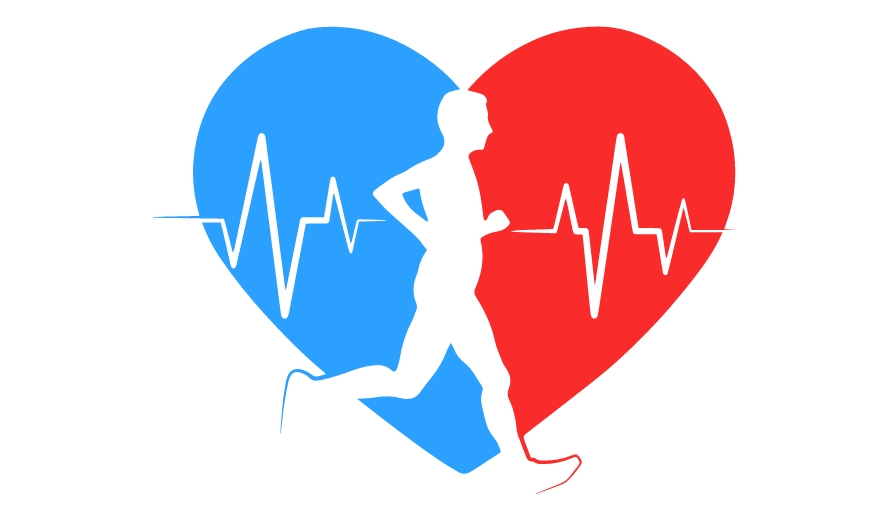Running and jogging are two popular ways to be active by moving faster than walking. Running is faster and more intense, while jogging is slower and less intense. The main difference is in speed and effort. Running is faster, usually above 6 miles per hour, while jogging is slower, around 4-6 miles per hour. Running is often for competition or performance, like marathon training, while jogging is more for fun or regular fitness. Knowing these differences can help you pick the right activity for your fitness goals.
Table of Contents
1. Speed and intensity differences

Speed and intensity are key factors that distinguish running from jogging. Running typically involves faster speeds and higher intensity levels compared to jogging. The increased speed in running requires more explosive power, stronger muscle engagement, and greater cardiovascular endurance. This can lead to a more challenging workout that helps improve overall fitness levels at a quicker pace.
On the other hand, jogging is characterized by a slower pace and lower intensity levels than running. Jogging is often seen as a more relaxed form of exercise that allows individuals to maintain a steady rhythm without pushing themselves too hard. While jogging may not offer the same high-intensity benefits as running, it can still provide valuable cardiovascular improvements and help build endurance over time.
2. Impact on physical health

When it comes to physical health, the distinctions between running and jogging become even more pronounced. Running, with its higher intensity and faster pace, allows for a greater calorie burn and cardiovascular workout compared to jogging. This aspect is particularly beneficial for weight management and improving heart health by strengthening the cardiovascular system.
On the other hand, jogging can be gentler on the joints due to its slower pace and lower impact on the body. For individuals looking for a form of exercise that is accessible and sustainable in the long term, jogging provides a less demanding option that still offers significant health benefits. Both activities contribute to overall physical fitness, but understanding their unique impacts can help individuals make informed decisions based on their personal fitness goals.
3. Mental benefits of each activity

Engaging in physical activities like running and jogging can have numerous mental benefits that extend beyond just physical well-being. Running, with its higher intensity and potential for pushing your limits, can help boost your mood through the release of endorphins – the feel-good chemicals in our brain. This can lead to a sense of accomplishment and euphoria after a challenging run, which can greatly improve overall mental health.
On the other hand, jogging, with its more moderate pace and lower impact on the body, provides an excellent opportunity for relaxation and stress relief. The rhythmic motion of jogging can act as a form of meditation, allowing you to clear your mind and focus on the present moment. This mindfulness practice during jogging has been linked to reducing anxiety levels and promoting mental clarity.
4. Training and preparation requirements

Training and preparation are key elements that differentiate running from jogging. While both activities involve moving at a faster pace than walking, the intensity and level of commitment required can vary significantly. Runners typically engage in structured training programs that focus on building endurance, speed, and strength to improve performance. This often includes incorporating interval training, hill workouts, and long runs into their routines. On the other hand, joggers may opt for a more casual approach, enjoying the activity for its health benefits and stress-relief without following a strict training regimen.
In terms of preparation requirements, runners often invest in proper footwear, clothing suited for various weather conditions, as well as accessories like GPS watches or heart rate monitors to track performance metrics. Additionally, running events such as marathons or trail races may require specific preparation such as race-day nutrition planning and mental strategies for overcoming challenges during the event. Joggers may have simpler preparation needs but still benefit from comfortable attire and supportive shoes to enhance their overall experience. Ultimately, both running and jogging offer unique opportunities for individuals to challenge themselves physically and mentally while enjoying the benefits of being active outdoors.
5. Common misconceptions about running and jogging

Misconceptions about running and jogging are abundant, often leading people to view these activities in a skewed light. One common misconception is that running is inherently better than jogging for fitness. In reality, both activities offer numerous health benefits, with each catering to varying levels of intensity and endurance. Another prevalent myth is that only fast-paced running yields results; however, leisurely jogs can also contribute significantly to overall well-being.
Furthermore, there is a widespread notion that you must be incredibly fit to start running or jogging regularly. This couldn’t be further from the truth – these activities can be adapted to suit individuals of all fitness levels and abilities. Lastly, some believe that running or jogging frequently leads to knee joint damage due to the impact on the legs. While proper form and technique are crucial, studies suggest that moderate running may actually strengthen joints over time when done correctly.
6. Choosing the right activity for you

When it comes to choosing the right activity for you, one key factor to consider is your personal preference. Running and jogging are both excellent cardiovascular exercises, but they offer slightly different experiences. If you enjoy a faster pace and high-intensity workouts, running might be more suitable for you. On the other hand, if you prefer a more relaxed and steady pace, then jogging could be the perfect choice.
Another aspect to consider is your fitness goals. Running typically burns more calories and can help improve speed and endurance. Jogging, on the other hand, is gentler on the joints and may be a better option for those looking to ease into a fitness routine or recover from an injury. Ultimately, the right activity for you will depend on your individual preferences, goals, and physical condition. So take some time to explore both options and see which one resonates with you!
7. Conclusion: Making informed fitness choices
In the fitness world, it’s important to make smart choices to reach our health goals and improve our workouts. Understanding the differences between running and jogging can help us customize our routines to suit our needs. Both activities offer unique benefits that can enhance our overall well-being. When deciding between running and jogging, think about your fitness level, goals, and any injuries. Choosing wisely can make your workout more enjoyable and effective. Remember, there’s no one perfect way to stay fit – the key is finding what works best for you on your path to a healthier lifestyle.
-
Running Vest, USA Original Patent, Zip Reflective Running Vests with 500ml Hydration Bottle, Adjustable Waistband & Breathable Material, Chest Pack Gear Phone Holder for Running, Men & Women
-
Vibrelli Hydration Pack & 2L Hydration Water Bladder – High Flow Bite Valve – Hydration Backpack with Storage – Lightweight Running Backpack
-
ZELUS Weighted Vest, 6lb/8lb/12lb/16lb/20lb/25lb/30lb Weight Vest with Reflective Stripe for Workout, Strength Training, Running, Fitness, Muscle Building, Weight Loss, Weightlifting
-
Running Vest, USA Original Patent, Zip Reflective Running Vests with 500ml Hydration Bottle, Adjustable Waistband & Breathable Material, Chest Pack Gear Phone Holder for Running, Men & Women
-
Vibrelli Hydration Pack & 2L Hydration Water Bladder – High Flow Bite Valve – Hydration Backpack with Storage – Lightweight Running Backpack
-
ZELUS Weighted Vest, 6lb/8lb/12lb/16lb/20lb/25lb/30lb Weight Vest with Reflective Stripe for Workout, Strength Training, Running, Fitness, Muscle Building, Weight Loss, Weightlifting

















